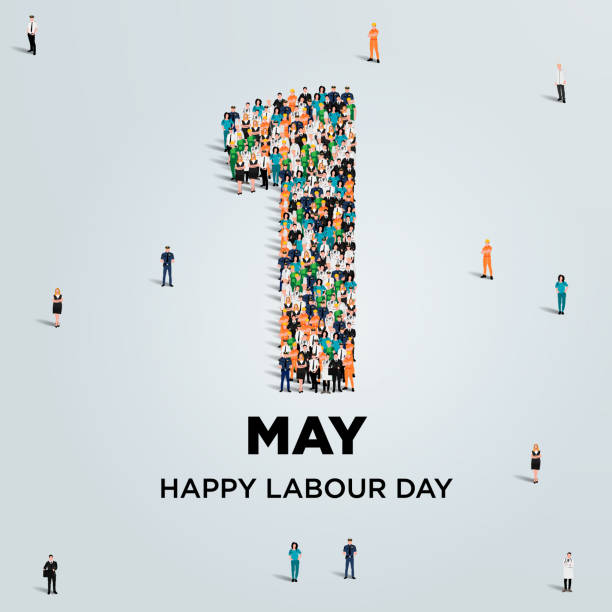Embracing change calls for bravely
Robert Hanson recently lost his job. He got fired. Unceremoniously, and certainly unexpectedly, booted out of his corporate gig in January. But there’s no need to shed tears for Mr.
Robert Hanson recently lost his job. He got fired. Unceremoniously, and certainly unexpectedly, booted out of his corporate gig in January. But there’s no need to shed tears for Mr. Hanson fate, I have a feeling he’ll be just fine.
See, the job Mr. Hanson lost was the CEO position at American Eagle Outfitters (AEO) – an American clothing and accessories retailer with a significant share of the teen market. Mr. Hanson, a charismatic, experienced executive who, at 49, had helped build the denim brand Levi’s into a 3.5 billion dollar business, seemed to be the right man to revitalize the stagnant company.
Which is what he promptly went about doing, swooping in and instantly injecting some energy and much needed warmth into the staid corporate culture. He emphasized communication and employee connection, maintaining a warm approachable presence, sending frequent companywide emails, leading town hall meetings and starting new traditions like community volunteer days.
He also made large investments towards developing AEO’s digital and mobile presence, appropriately so given the company’s target consumer. Initially his strategies seemed to be working as he rounded off his first year with record-breaking sales and shares making a huge 34 percent leap. While these investor-happy numbers deteriorated during his second year, employee morale was still high despite the depressed retail market.
And still, Mr. Hanson lost his job, an abrupt decision that shocked Wall Street and brought employees to tears. Of course I’m not privy to the details of his outing and can only go by the consistently dramatic media speculation surrounding the company. But, word on the street is that his change-based tactics did not sit well with some of the old guards. The executives and board members who had been around since the company’s birth in the late seventies didn’t really feel any need to respect Mr. Hanson, so they didn’t. There’s also the fact that they didn’t particularly see the urgency, much less the need, for the changes the strapping young CEO was implementing. They were scared of getting pushed out, of becoming irrelevant, of suddenly not being in control, and of losing out on all they worked so hard to create and maintain.
Change, even the mere whisper of it, has this strange effect on people. Theoretically change is very simple. It’s a step forward, backwards, sideways, up or down – whichever way, it’s just a step. It’s inevitable. It happens every single millisecond on all planes of our earthly existence. It’s our excessively stubborn resistance to change that makes things very interesting and frustratingly complex. The good news is that because we struggle so much with this inescapable fact of life, a lot of very smart people have, and continue to, dedicate their lives to understanding how and why change affects us so, and helping people, organizations and communities navigate the precarious change battlefield.
Change involves leaving the familiar, facing the unfamiliar, moving from one to the other, sometimes having to learn something new and, as with any action that involves a significant amount of uncertainty, risking big fat failure. Just to clarify, we don’t like dealing with any of this stuff. So we resist – a very simple, very powerful, very effective and pretty darn useful survival mechanism.
Our resistance is tied to a couple of cognitive biases – patterns of deviation in judgment drawn from illogical inferences about other people and situations – or in simpler terms, human beings acting predictably irrational because it’s easier to do so.
Here’s a simple example: you and your partner are arguing over whether or not to keep that old, bulky armchair sitting in the middle of your living room. His argument is that the chair is barely used, not very comfortable and undeniably ugly. You respond that if it ‘ain’t broken, what’s the problem? You also don’t want to deal with the hassle of getting rid of the chair, shopping around for a new one, and parting with your hard earned cash. And did you mention that the chair belonged to your great, great, great grandfather? He bites back with the fact that he already found a new armchair you’d both love, one that’s cheap, pretty, and comfortable. He even says that he has a friend that’s willing to pickup the old chair. How can you argue with this? Why are you hesitating to say yes and gratefully embrace him?
You’re being irrational. Predictably so. You’re certainly not the first to experience the effects of a) the Status Quo Bias, b) Loss Aversion and, c) the Endowment Effect. Or in simpler terms, a) you have a preference for the current state of affairs and perceive anything other than the norm to be a loss, b) losing something hurts more than gaining something feels good, at least according to your mind, and c) you ascribe more value to your current chair simply because you own it, and therefore demand a lot more to give it up.
When referring to a mere armchair all of this seems pretty simple to understand and correct, after all (hopefully) no lives are at stake in the great armchair debate. But when we’re talking about things of larger significance and value, such as buying a new house, learning how to use new technology, introducing new organizational rules and structures, or phasing in policies that affect millions, our biases aren’t always entirely irrational.
What if you’re told that instead of buying a new armchair you’re going to be trying out a brand new seating device that just hit the market, made up of strings and ostrich feathers (all the cool kids are sitting on them)? Or what if you go to work and suddenly find yourself forced to communicate to your colleagues in French only? Now you have to learn French before you can even begin to get work done. And what if you fail miserably at learning French and risk losing your job? The status quo doesn’t seem all that irrational after all, does it?
Which brings us back to poor Mr. Hanson battling the old guards at American Eagle Outfitters. When you’ve spent twenty plus years building an organization one brick at a time, overcoming one obstacle after another, shedding blood and tears on your way to the top of the food chain, when you’ve sacrificed so much to get to where you are, you’re most certainly not gong to give anything up without an epic fight. Especially if your opponent is some young, overly ambitious, impractical, gun. Your experience and knowledge may be invaluable and your resistance to unsustainable changes perfectly rationale. After all, haven’t you clearly succeeded thus far?
Rationale or not, our reactions to change deserve attention and introspection. We must be willing to confront all those worst case scenarios we harbor and obsess over, much like we tell our kids to conjure up the courage to look under the bed and see, for themselves, that there are indeed no monsters living there. We can, if we choose to be, be brave enough to question the status quo, or at the very least our inclination towards the status quo. After all, what are we scared of losing? Are we questioning the change itself or our ability to handle something new and unfamiliar in our lives? Do we really, really want things to stay as they are? Really? Over and over again we must ask ourselves, ‘which is stronger: our urge to grow or our resistance to change?’
Published on May 2014





